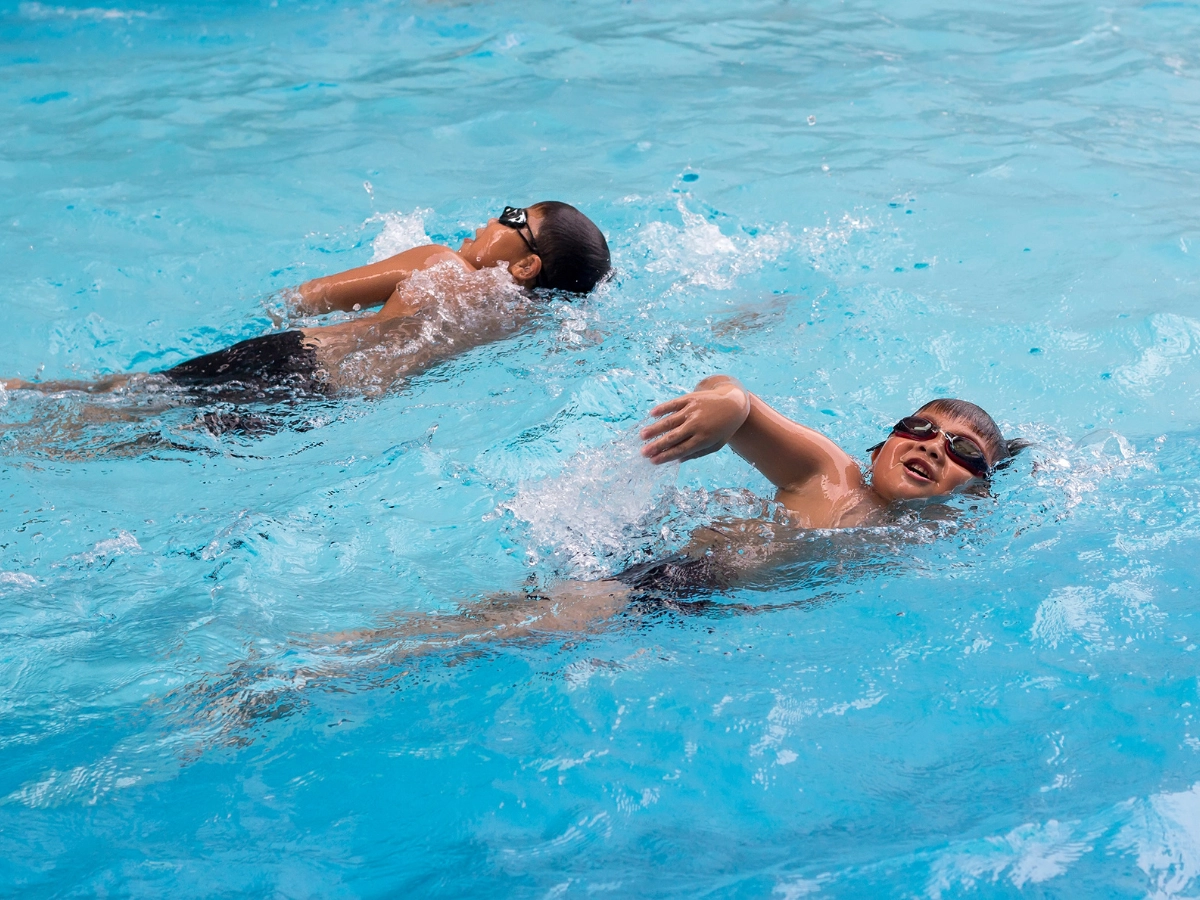A challenge that every instructor will face is the fearful child. Often it’s a challenge just to get them into the water. And after they’ve made it that far, you never know when they might become overwhelmed and just need to get out. Your hope is that they will decide there wasn’t really anything to fear and start enjoying the water and the lessons.
Much of this is up to the child, but there are some things that you can do to help fearful children become confident swimmers.
Recognize and acknowledge
It will probably just take you seconds to spot a fearful child – perhaps from their facial express or their body language. A parent may even tell you that their child is afraid of the water. The first step (and it’s an important one) is to acknowledge the fear. This isn’t one of those issues that will go away if you ignore it. Validate and move one. Use their fear as an opportunity to share something about yourself with them. Tell them about something you were afraid of and that when you learned more about it, you saw that there was really nothing to fear at all. It is important, however, not to push this. If the child starts to shut down or gets defensive, let it go.
Avoid “the wrong” question
There is a question that is the absolute wrong one to ask because there is really no good answer for the fearful child to respond with.
What response do you think you’re going to get if you ask a child “Wouldn’t you like to get in the water?” The obvious answer is “No” and answering with that may even embarrass them. You also don’t want to gieve the child the chance to say “No” to getting in the water. If you do this, you really have no next step for convincing them that they’ve nothing to fear.
Have patience
You may be tempted to push this process (getting the fearful child in the water) along as quickly as possible. But you aren’t going to get anywhere until the child calms down. It may be helpful to change their focus. Ask what type of toys he likes and pull a water toy that fits his preference out of your bag and put it in the water close to the edge of the pool. After he has a little time to think about the toy, retrieve it from the water. Repeat this several times. Usually the child’s desire to play will overcome his fear of the water and he will be ready to go after the toy in the water close to the pool’s edge.
Maintain control
During lessons, the parents don’t run the show. Don’t let them take over simply because they have a fearful child. If they apply pressure for the child to immediately get in the water despite his fear, take them aside and gently explain the process that you’ve had successful with in getting fearful children into the water without stressing them out. Then they understand that pressuring them produces no good results, they won’t try to control the situation and you can help everyone to remain calm around the water.
When these tactics are used, fearful children, more often than not, come around. In fact, they often overcome their fears when they see other children in the water having fun. Above all, it’s important to remain calm. They already associate fear with water and you don’t want them to draw a similar association with another negative, such as stress.
Source: About.com














